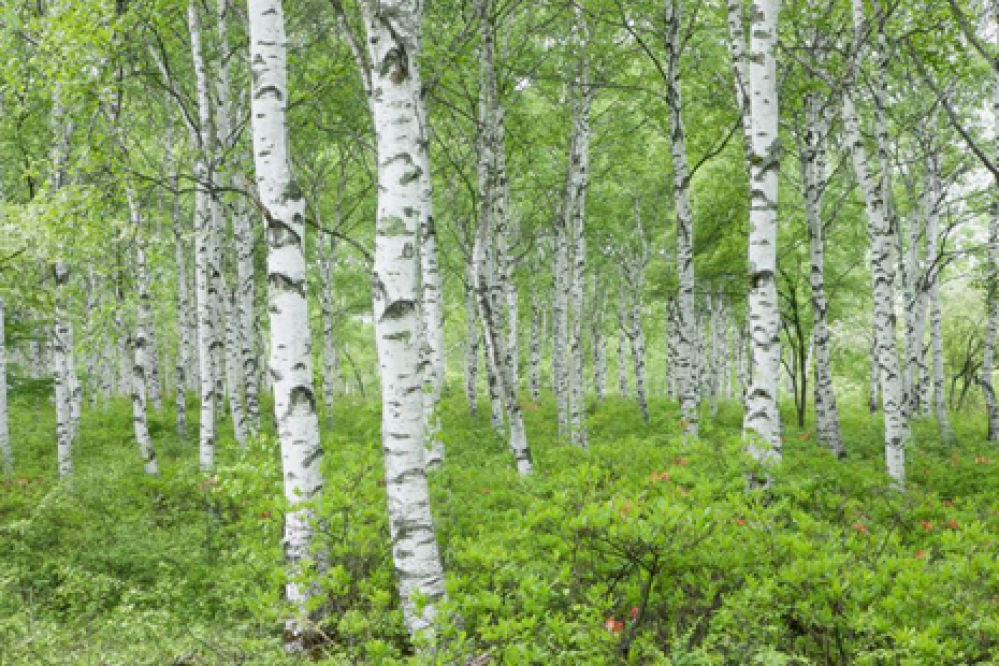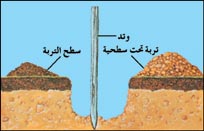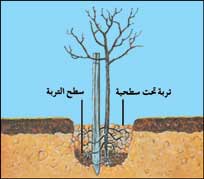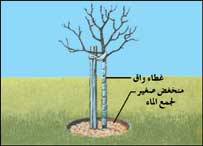Homeowners plant different types of trees on their properties; They plant shady trees for protection from the sun and ornamental trees for beautification. They may plant trees as windbreaks. Many people enjoy the presence of fruit trees in their gardens, to provide them with fruits, and to provide them with shade and beauty.
Choose the right trees
In order for trees to grow well, the tree must be suitable for the area in which it is planted. Trees brought from far away should only be planted in areas with a climate similar to their original homeland, and the distinctive characteristics of the tree should be taken into account when planting it. For example, trees with spreading roots should not be planted near houses; Because the roots may damage the drains and foundations or block the sewage pipes.
Trees with fully spreading leafy crowns are among the best shade trees, and trees with attractive flowers, such as magnolia trees, are among the most popular ornamental trees. Needle-leaved trees are planted as ornamental trees in many parts of the world and make good windbreaks, and some broad-leaved trees such as the Lombard poplar make windbreaks. Apple and cherry trees are among the most popular fruit trees in temperate regions. In areas with a warm climate, many people grow citrus trees.
Tree planting
The tree must be planted in a good location, so that it has a spacious place that helps complete its growth, and the soil must be fertile and with good drainage so that water does not collect and submerge the roots.
Tree growth from seed requires a long time and great effort, so most people prefer to buy trees from nurseries, to plant them directly in soil suitable for them.
The most appropriate time to move trees is when they are in the dormant season, ie in the fall, winter or early spring. The roots of deciduous trees may be uprooted without being covered with soil, but they must be kept in a damp place while they remain outside the ground, while the roots of evergreen trees must be uprooted while they are enclosed in a spherical mass of soil. The hole prepared for planting any new tree should include enough space for all the roots below the surface of the earth. Just before planting, long roots should be cut diagonally, to encourage the growth of new roots. If the tree is a hardwood tree, then the top must be cut off and the branches trimmed by shortening them to approximately a quarter of their original length, to reduce the burden on the roots during the first growth phase. Young trees may need supports from stakes to protect them from storms.
hole work . Dig a hole large enough to plant the roots in. Then collect the topsoil and subsurface soil each in a separate place, and any type of abutment can be planted at this stage if necessary.
Tree care. The young tree is watered at moderate rates until it has strong roots. This usually takes about a year, and it must be fed with nutrients to achieve strong growth. Pruning and cutting off the lower shoots of some young shade trees is good to prevent too many lower branches from growing, but enough shoots should be left for the tree to have a full, leafy crown. Whenever the tree forms branches in its upper parts, additional lower branches can be removed. See: pruning.
tree planting Carefully spread the roots into the hole and cover them with the soil surface. Then use the less fertile subsurface soil to fill the upper part of the pit.
The tree may become infected with insect pests or diseases, but with normal tree care, most non-serious infestations can be overcome. But if the trees are unable to form leaves in the normal numbers or if the leaves appear pale, they need the care of a professional plant pathologist. Air pollution in some areas threatens the life of trees.
Tree care . Water the tree at an average rate during the first year. The trunk can be wrapped in burlap or thick paper during the first two years to protect it from sun blight and insects.
environmentally
Trees contribute to the ecological balance. It stabilizes the soil. It absorbs carbon dioxide from the atmosphere and gives off oxygen . - Absorbs excess water on the surface of the earth to prevent erosion.
Economically
Wood production for industry. A source of many medicines. - Produces fruits, gum and cork . It is a source of grazing and firewood production.




